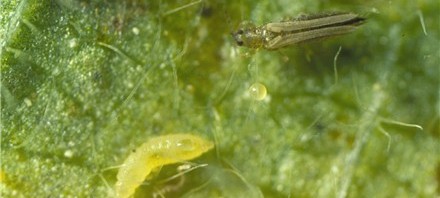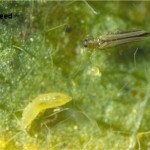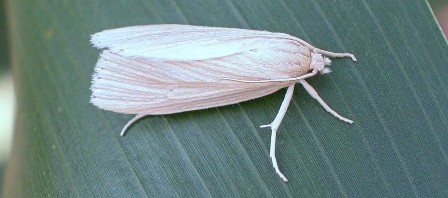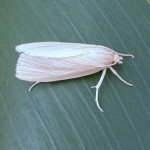Below are the results of a foliar insecticide test on thrips in cotton at the WTREC (rated 5/21/12). Cotton was at the 1-leaf stage at the time of application, and Continue reading
All posts by Scott Stewart, West TN Research & Education Center
UT Cotton Scout School, Friday, May 25th
UT Cotton Scout School on Friday, May 25th at the West Tennessee Research and Education Center in Jackson. Registration will begin at 8:00 AM (no fee or preregistration required). The program will end with a box lunch and a go-to-the-field session for those interested after lunch.

It’s Raining Thrips
 Actually, thinking of thrips as raining from the sky is pretty accurate; and we are getting a pretty good flood in most areas. Many people are reporting 2-15 thrips per plant on cotton from the cotyledon stage up to the second true leaf. These calls are pretty easy to answer. Spray if multiple thrips are present on plants with less than two true leaves. Certainly apply a foliar insecticide if the first or second true leaf has obvious signs of thrips injury … Continue reading
Actually, thinking of thrips as raining from the sky is pretty accurate; and we are getting a pretty good flood in most areas. Many people are reporting 2-15 thrips per plant on cotton from the cotyledon stage up to the second true leaf. These calls are pretty easy to answer. Spray if multiple thrips are present on plants with less than two true leaves. Certainly apply a foliar insecticide if the first or second true leaf has obvious signs of thrips injury … Continue reading
False Chinch Bugs Killing Cotton … Are Beans Next?
False chinch bugs are a pest that can kill cotton and soybean seedlings. I see them in a few fields almost every year, but they are causing more widespread problems this year with reports from Madison, Gibson, Haywood and Hardeman Counties. Infestations almost always occur in Continue reading
Making Cotton Re-plant Decisions
The last week of April and first week of May were extremely dry in some portions of west TN causing producers to chase moisture and plant seed deeper than usual. Heavy rain in some areas follwing planting on May 7th caused some soil surface sealing and crusting. Each year many producers are forced to replant cotton due to adverse conditions. Replanting is one of the most difficult decisions to make and second guessing is very common. Continue reading

Moth Trapping … Southwestern Corn Borers Are Out Early
 It is amazing how insect populations sync up with the crop. Like our corn crop, the first generation southwestern corn borer moth flight has started early. Usually it starts about now, but some folks have been catching moths in pheromone traps for a couple of weeks, and moth catches are higher than usual. Moth trapping data are linked under the “Quick Links” menu for SWCB, corn earworm (or bollworm), tobacco budworm and beet armyworm. Compared with this week last year, moth catches are Continue reading
It is amazing how insect populations sync up with the crop. Like our corn crop, the first generation southwestern corn borer moth flight has started early. Usually it starts about now, but some folks have been catching moths in pheromone traps for a couple of weeks, and moth catches are higher than usual. Moth trapping data are linked under the “Quick Links” menu for SWCB, corn earworm (or bollworm), tobacco budworm and beet armyworm. Compared with this week last year, moth catches are Continue reading
Thrips Management in Cotton
The phone has been ringing regularly the last few days with reports of fairly high thrips numbers, mostly adults, on seedling cotton. Most of our cotton is less than the two leaf stage. I’m not too surprised considering the wheat is drying down just as our cotton is emerging. Averages of 2 – 8 thrips per plant are being reported, with a few Continue reading
Early Season Dry Conditions and Irrigation?
From Chris Main, Brian Leib, David Verbree, and Larry Steckel.
Rainfall continues to be spotty across Tennessee. Some locations have continued to have adequate moisture while other areas continue to miss the passing thunderstorms. Continue reading
